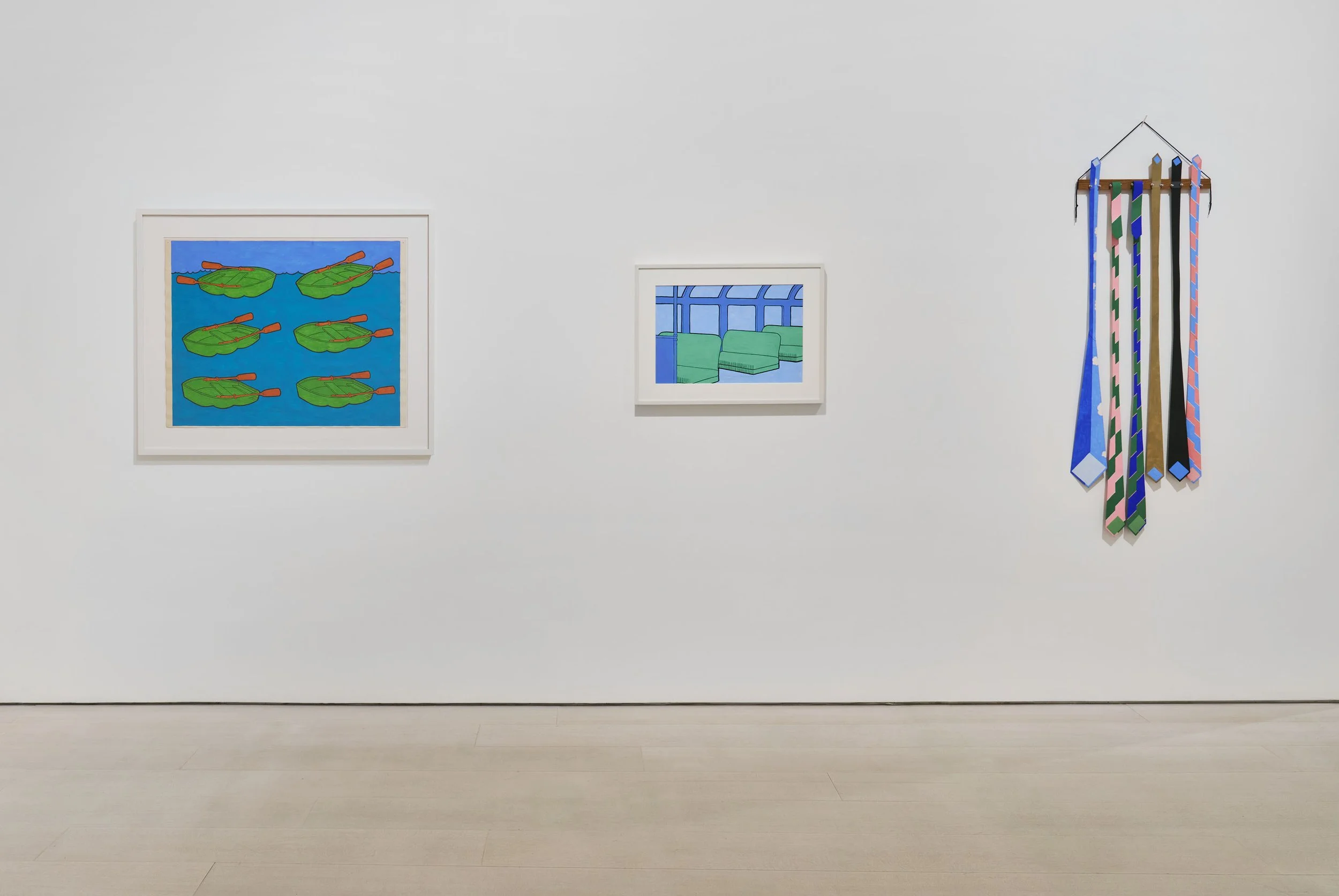WESLEYWORLD: WORKS ON PAPER AND OBJECTS 1961–2004
Pace is pleased to present its first exhibition dedicated to the work of John Wesley. At 540 West 25th Street in New York, this exhibition will bring together over 30 works on paper and painted objects produced by Wesley over the course of his career, from the early 1960s to the early 2000s.
January 12 – February 24, 2024
Wesley, who died in 2022 at age 93, is known for his flattened, idiosyncratic figurations that defy easy classification within any single artistic movement. Drawing inspiration from images in comics and other mass media, the artist cultivated a distinctive, graphic style characterized by bold, weighted lines, unmodulated color, and an absurdist- edge.
Marked by eroticism, wry humor, and often a slight sense of unease, Wesley’s work explores a wide range of imagery informed by pop cultural and literary sources as well as the artist’s own memories and daily experiences. Many of his works are concerned with enactments of balance and symmetry, examining nuances of sexuality and desire through a formal language characterized by unexpected crispness and precision.
Wesley produced a large body of landscapes regularly depicting tranquil shorelines and stormy seascapes, but also rolling hills and urban skylines. In his figurations, the human body and its constituent parts are often used to experiment with repetition as a formal device. Wesley also frequently reimagined characters from popular culture— most notably Dagwood Bumstead and his wife Blondie from the Blondie comic strip—in scenes across his body of work.
“His often caustic wit also has a warm-heartedness to it when the topic demands, and his sense of comedy is no less pronounced than his sense of tragedy,” art historian Martin Hentschel wrote in his 2005 publication on Wesley’s works on paper, continuing later, “He directed his gaze above all to the human condition, with all its peaks, ambiguities, and abysses.”
Pace’s upcoming exhibition will showcase the varied scales of Wesley’s works on paper, allowing visitors to experience the impressive range of form and imagery through which he experimented with repeating, layering, and mirroring—formal mainstays of his paintings.
Though the works on view in the show span Wesley’s career, they reveal a remarkable consistency in his approach to image-making over the course of five decades. Tracing the evolution of the artist’s interests over time, these artworks shed light on the different subjects that entered his visual lexicon between the 1960s and 2000s.


